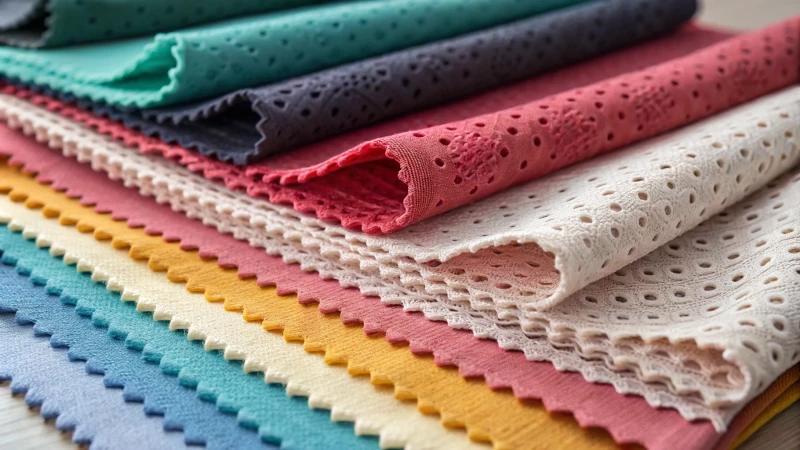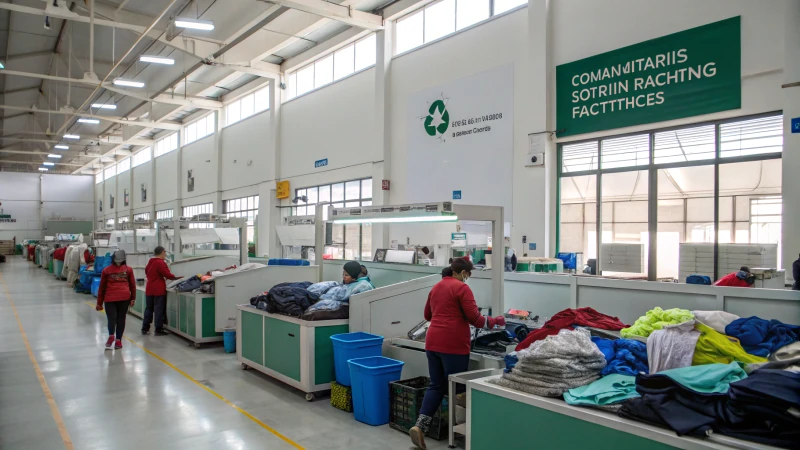
Have you ever questioned why recycling underwear is really confusing?
Recycling underwear is really difficult. The mix of cotton and elastane materials poses a challenge. Contamination from wear adds another layer of difficulty. Bodily fluids make processing complicated. Most recycling systems probably cannot handle textiles like underwear.
Putting them into a recycling bin and considering the job finished doesn't work. I remember feeling confused. Something so tiny can create such a huge problem. The mix of materials like cotton and polyester feels like untangling holiday lights. It's very frustrating and never-ending. Hygiene issues also exist. Many recyclers often skip this category.
Grasping these challenges is the first step towards solutions. Creative breakthroughs might turn recycling underwear into something as simple as throwing a plastic bottle in the bin. Until that day, we think about these challenges with every pair we wear out.
Underwear recycling is hindered by material complexity.True
Different materials like cotton and polyester complicate separation.
Current recycling systems are well-equipped for underwear.False
Most systems can't handle textiles due to contamination and material mix.
Why Is Underwear Material Composition So Complex?
Have you ever thought about why underwear uses a complicated mix of materials? A simple item hides many secrets.
The composition of underwear material involves a complex mix of fibers. Manufacturers often choose cotton, elastane and polyester. These fibers offer comfort, stretchiness and the ability to wick away moisture. This combination improves how the underwear functions. However, recycling becomes more difficult due to this blend.

Understanding Material Blends in Underwear
I am very particular about comfort when it comes to underwear. People deal with the tricky task of finding a pair that neither pinches nor sags. The true secret is in the mix of materials.
Material Properties Table
| Material | Property | Usage |
|---|---|---|
| Cotton | Soft, breathable | Ideal for slow weekends |
| Elastane | Elasticity, flexibility | Perfect for a morning run |
| Polyester | Durable, moisture-wicking | Crucial for sportswear |
Cotton offers softness and breathability, ideal for slow weekends. A small amount of elastane adds stretchiness and flexibility, perfect for a morning run. Polyester adds strength and manages moisture, which is crucial for sportswear.
Challenges of Separating Materials
Recycling old underwear is not as easy as just throwing it away. Each type of material needs a unique recycling method. Cute lace patterns complicate the separation process even more! The main challenge in recycling underwear is separating these tightly woven materials.
Impact on Recycling Infrastructure
Sadly, many recycling centers lack the machines needed for these mixed materials due to the specialized equipment required1 to separate and recycle individual fibers properly. This means a lot of underwear ends up in dumps instead of being recycled into new products.
Consumer Awareness and Environmental Impact
Most people, including myself in the past, don’t know the environmental impact of discarding old underwear. Choosing underwear made from recyclable or very sustainable materials is important. Brands should label their products clearly and guide us on proper disposal methods.
Innovations and Future Trends
There is hope! Sustainability is becoming very important as innovations in material science are emerging. Researchers focus on creating biodegradable fibers and closed-loop recycling methods. Committed brands start adopting these practices, which may greatly transform the future trends in the underwear industry.
Cotton is used for its moisture-wicking ability.False
Cotton is breathable and comfortable, not moisture-wicking.
Elastane enhances underwear stretchability.True
Elastane provides elasticity and flexibility to fabrics.
How Does Contamination Affect Underwear Recycling?
Have you ever thought about where old underwear goes? Recycling underwear is more difficult than people probably realize. Contamination problems make the process complicated. Let's explore this messy situation.
Contamination creates a major obstacle in recycling underwear. Bodily fluids, oils and lotions create difficulties in the process. These substances complicate the separation of materials. They also pose hygiene risks at recycling centers. Recycling facilities face these hygiene challenges, too.

The Challenge of Mixed Materials
Think about that cozy pair of underwear you love. It often mixes cotton, polyester, and elastane. Explaining this to my friend was tricky when they wondered why we can't recycle underwear like paper or plastic. These mixed materials are very hard to separate. Adding contamination from bodily fluids2 or lotions makes it difficult. It's like trying to solve a puzzle with missing pieces.
Hygienic Concerns in Recycling
Picture a recycling plant worker sorting through used clothes and underwear. The job is not just about separating materials. Safety and cleanliness must be considered too. Used underwear often has sweat and oils. This situation makes cleaning tough. Recycling facilities require strict cleaning protocols, which raise costs and add complexity.
| Contaminant Type | Impact on Recycling |
|---|---|
| Bodily Fluids | Hygiene issues, increased cleaning costs |
| Oils & Lotions | Difficult to clean, may affect material separation |
Impact on Recycling Infrastructure
Recycling systems usually don’t handle textiles and their unique mess well. A recycling manager told me they manage paper and plastics without issue. But underwear? That's really different. Facilities often struggle with these contaminated items, limiting their recycling capacity.
Consumer Awareness and Practices
Many people do not know they could recycle their underwear. Remember throwing an old pair away without a second thought? Learning how to clean and prepare items for recycling could probably help alleviate some contamination issues, potentially improving recycling rates3 significantly.
Economic Implications of Contamination
Recycling dirty underwear is not only tough; it's also expensive. Cleaning and separating increase costs a lot, making the process less appealing than creating new products. I often consider if programs to reduce contamination could lead to more sustainable methods—a big challenge but very important for real change.
Contamination increases underwear recycling costs.True
Cleaning and separation processes are costly due to contaminants.
Most recycling facilities can handle contaminated textiles.False
Current systems struggle with high contamination levels.
How does infrastructure impact recycling underwear?
I remember hearing about recycling underwear for the first time. It is an unusual idea, isn't it? Infrastructure plays a vital role in this process. It involves more than just bins and trucks. It transforms our perspective on waste.
Recycling underwear needs special infrastructure. This includes places that handle complex fabrics and technology that sorts materials. Some initiatives teach people about proper disposal methods. These parts probably work together to make underwear recycling efficient. It is also sustainable.

The Complexity of Textile Recycling
I started exploring textile recycling and felt amazed by its complexity. Underwear often consists of blends of cotton, elastane, and polyester. Each material needs a different recycling method. Advanced sorting technologies4 help separate these materials efficiently. Such separation is really challenging.
Importance of Specialized Facilities
I once visited a facility focused on recycling and learned a lot. These places deal with delicate fabrics and contaminated materials. They face contamination from bodily fluids, which is something many people don’t really consider. The machines and systems in these facilities are impressive and require significant investment.
| Facility Type | Key Function |
|---|---|
| Sorting Facilities | Separate materials efficiently |
| Decontamination Units | Remove oils and lotions |
| Recycling Plants | Process textiles into reusable materials |
Specialized facilities5 really matter in this process.
Raising Public Awareness
I thought everyone knew how to recycle, but public awareness is vital. I saw how educational programs and easy drop-off points help a lot. Such efforts can improve recycling rates by informing people about their available options6.
Challenges in Existing Systems
Despite advancements, systems often face problems with recycling textiles like underwear. Costs and complexities are discouraging, highlighting the need for more investment in infrastructure to bridge these gaps effectively.
Understanding these aspects highlights the importance of infrastructure for sustainable recycling practices for underwear. With proper facilities and public education, we can change this area for a more sustainable future.
Advanced sorting tech is crucial for recycling underwear.True
Sorting tech separates diverse materials like cotton and polyester.
All recycling facilities can process underwear effectively.False
Specialized facilities are needed due to complex material blends.
How Can Consumer Awareness Improve Underwear Recycling?
Have you ever thought about where your old underwear goes? Many people don't consider it, but understanding this can open the door to a more sustainable fashion future.
Consumer awareness transforms underwear recycling by teaching people about recycling options. It also promotes sustainable buying habits. It highlights the environmental impact of textile waste. Education programs must be accessible. This is very important for increasing recycling rates.

The Role of Education in Recycling Efforts
Recycling surprised me with its complexity, especially with personal items like underwear. Many people, including myself, don't know that these items mix materials like cotton, elastane, and polyester. We must separate and reuse these materials. This process seems difficult without the proper knowledge. Educational campaigns simplify recycling and show us how to help the sustainable cycle.
Educating consumers is pivotal in transforming recycling habits. Many people are unaware of the complexities involved7 in recycling underwear due to mixed materials like cotton, elastane, and polyester. Informative campaigns can explain how these materials can be separated and repurposed.
Encouraging Sustainable Purchases
I recall being in a store, choosing between two underwear brands. One used eco-friendly materials; the other did not. That moment made me realize how my choices impact the planet. With more knowledge, consumers like us decide wisely and support sustainability.
Consumer choices can shift significantly with the right information. Promoting brands that use eco-friendly materials encourages sustainable practices.
| Material | Recyclability | Environmental Impact |
|---|---|---|
| Cotton | High | Biodegradable |
| Polyester | Moderate | Non-biodegradable |
| Elastane | Low | Non-biodegradable |
By choosing products with high recyclability, consumers support a more sustainable cycle.
Highlighting the Environmental Impact
We often ignore the environmental effects of our clothing choices. I became more aware of this issue as textiles such as underwear add to landfill waste significantly.
Publicizing the environmental consequences of textile waste can motivate behavioral changes. Textiles contribute significantly to landfill issues, with underwear being a notable component due to frequent disposal. Awareness campaigns can link these issues to broader environmental challenges.
Implementing Accessible Recycling Programs
Awareness alone doesn't solve the problem. I once wanted to recycle old underwear but found no easy options nearby.
Awareness alone isn't enough; accessible recycling programs are necessary. Many areas lack infrastructure for textile recycling, making it crucial to push for local government or private sector involvement.
Advocating for convenient recycling programs is vital. Knowing where and how to recycle clothes encourages participation.
Consumers should know where they can recycle old garments and what happens post-recycling.
Leveraging Social Media for Greater Reach
Social media has kept me informed about sustainability. Platforms like Instagram and Facebook help spread the message about recycling.
Social media platforms offer a powerful medium to educate and engage consumers on sustainable practices.
With influencers and targeted campaigns, we reach more people inspiring collective action across demographics.
Influencers and campaigns can amplify messages about the importance of recycling underwear inspiring collective action across demographics.
Addressing these areas probably improves underwear recycling rates contributing to a greener fashion industry and healthier planet overall.
By addressing these areas consumer awareness can significantly improve the rate at which underwear is recycled contributing to a more sustainable fashion industry and environment overall.
Maybe look into sustainable fashion initiatives8 to see their real impact on textile recycling efforts.
Cotton underwear is biodegradable.True
Cotton is a natural fiber that breaks down in the environment, reducing waste.
Social media has no impact on recycling habits.False
Social media can effectively spread awareness and influence consumer behaviors.
Conclusion
Recycling underwear is challenging due to mixed materials, contamination from wear, and inadequate recycling infrastructure, leading to significant environmental impacts and low consumer awareness.
Learning about textile recycling challenges reveals why certain garments like underwear are difficult to recycle. ↩
Understanding contaminants helps readers grasp the challenges in recycling processes. ↩
Explains the steps involved in recycling, offering context to readers. ↩
Learn about cutting-edge sorting technologies that facilitate effective textile recycling, especially for blended materials like those found in underwear. ↩
Explore what specialized facilities entail and how they are tailored to manage complex textile recycling, crucial for handling delicate materials. ↩
Understand the role of public awareness programs in boosting recycling rates by educating consumers about available options for sustainable disposal. ↩
Exploring this will provide insights into why recycling underwear is complex, helping readers understand the importance of material separation in sustainability. ↩
Discovering these initiatives can offer examples of effective strategies in promoting sustainable practices within the fashion industry. ↩






